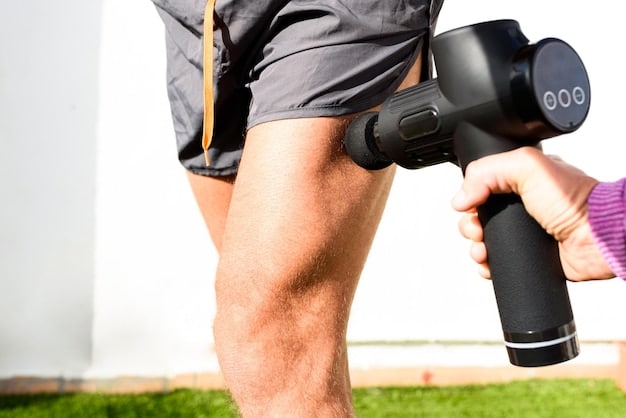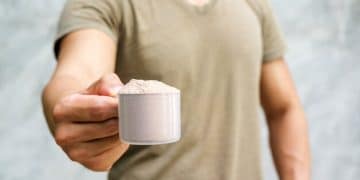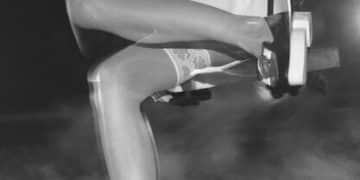The Best Post-Workout Recovery Strategies for Men in 2025

The Best Post-Workout Recovery Strategies for Men in 2025 focus on innovative techniques, nutrition, and technology for optimized muscle repair and reduced fatigue. Prioritizing sleep, hydration, and personalized recovery plans will enhance athletic performance.
After crushing a workout, your body needs the right tools to repair and rebuild. As we look ahead to 2025, the best post-workout recovery strategies for men are evolving beyond simple stretching and protein shakes. It’s about integrating cutting-edge science and personalized methods to optimize your gains.
Are you ready to discover the secrets to faster recovery, reduced muscle soreness, and enhanced performance? Keep reading to explore the ultimate guide to the best post-workout recovery strategies for men in 2025.
Understanding the Importance of Post-Workout Recovery
Post-workout recovery isn’t just about feeling less sore; it’s a critical component of muscle growth, performance enhancement, and injury prevention. Proper recovery allows your muscles to repair the microscopic damage caused by exercise, replenish energy stores, and adapt to the demands you’ve placed on your body.
Why Recovery Matters
Skipping or neglecting your recovery can lead to a host of problems, including:
- Increased risk of injury
- Chronic muscle soreness
- Reduced performance gains
- Burnout and fatigue
Effective recovery strategies are tailored to the intensity and duration of your workouts. High-intensity training requires more comprehensive recovery approaches compared to low-impact activities.

Key Elements of Effective Recovery
So, what does effective post-workout recovery look like? It’s a multi-faceted approach that includes:
- Proper nutrition to replenish glycogen stores and repair muscle tissue.
- Adequate hydration to support cellular function and nutrient transport.
- Sufficient sleep to allow for hormonal regulation and muscle repair.
- Active recovery techniques to reduce muscle soreness and improve circulation.
By prioritizing these key elements, you can optimize your recovery and achieve your fitness goals faster and more efficiently. Remember, consistent effort in recovery is just as important as pushing yourself during workouts.
Nutrition Strategies for Optimal Muscle Repair
What you eat after a workout can significantly impact your recovery. The right nutrients provide your body with the building blocks it needs to repair muscle tissue, replenish energy stores, and reduce inflammation. These are crucial considerations for understanding the best post-workout recovery strategies for men in 2025.
Protein: The Building Block of Muscle
Protein is essential for muscle repair and growth. Aim to consume 20-40 grams of high-quality protein within 1-2 hours after your workout. Good sources include:
- Whey protein
- Casein protein
- Lean meats (chicken, turkey, fish)
- Eggs
- Plant-based protein sources (tofu, lentils, quinoa)
Carbohydrates: Replenishing Energy Stores
Carbohydrates are your body’s primary source of energy. After a workout, your glycogen stores (stored carbohydrates in your muscles) are depleted. Consuming carbohydrates helps replenish these stores, allowing you to recover faster and perform better in your next workout. Opt for complex carbohydrates such as:
- Oatmeal
- Sweet potatoes
- Brown rice
- Quinoa
The Role of Hydration
Hydration is often overlooked, but it’s crucial for recovery. Water helps transport nutrients to your muscles, removes waste products, and regulates body temperature. Aim to drink plenty of water throughout the day, especially after your workout. Electrolyte-rich beverages can also be beneficial, particularly after intense or prolonged exercise.
In summary, post-workout nutrition is not just about protein; it’s about a balance of macronutrients and hydration to support optimal muscle repair and energy replenishment. This holistic approach defines the best post-workout recovery strategies for men in 2025.
Active Recovery Techniques to Reduce Soreness
Active recovery involves performing low-intensity exercises after a workout to reduce muscle soreness and improve circulation. Unlike passive recovery (simply resting), active recovery helps flush out waste products from your muscles and promote healing. Exploring these methods is vital when considering the best post-workout recovery strategies for men in 2025.
Light Cardio
Engaging in light cardio activities such as:
- Walking
- Cycling
- Swimming
These activities can increase blood flow to your muscles without putting excessive stress on them. Aim for 20-30 minutes of low-intensity cardio after your workout or on rest days.
Stretching and Foam Rolling
Stretching and foam rolling can help improve flexibility, reduce muscle tension, and break up adhesions. Focus on stretching the muscles you worked during your workout, holding each stretch for 20-30 seconds. Foam rolling can be particularly effective for targeting tight spots and trigger points.
The Benefits of Massage
Massage can be a valuable tool for post-workout recovery. It helps increase blood flow, reduce muscle soreness, and promote relaxation. You can opt for a professional massage or use self-massage tools like massage balls or handheld massagers.

Active recovery is a powerful tool for managing muscle soreness and enhancing recovery. By incorporating light cardio, stretching, foam rolling, and massage into your routine, you can help your body bounce back faster after intense workouts. Remember, consistency is key to reaping the full benefits of active recovery, making it a component of the best post-workout recovery strategies for men in 2025.
The Role of Sleep in Muscle Recovery
Sleep is often called the “ultimate recovery tool,” and for good reason. During sleep, your body releases hormones that promote muscle repair, growth, and overall recovery. Skimping on sleep can hinder your progress and increase your risk of injury. Understanding the science behind sleep is crucial for the the best post-workout recovery strategies for men in 2025.
How Sleep Impacts Recovery
During sleep, your body releases growth hormone, which is essential for muscle repair and growth. Sleep deprivation can decrease growth hormone levels, impairing your ability to recover from workouts. Additionally, sleep helps reduce inflammation, regulate cortisol levels (a stress hormone), and improve immune function.
Tips for Optimizing Sleep
To maximize the recovery benefits of sleep, aim for 7-9 hours of quality sleep each night. Here are some tips to improve your sleep:
- Establish a regular sleep schedule
- Create a relaxing bedtime routine
- Optimize your sleep environment (dark, quiet, cool)
- Avoid caffeine and alcohol before bed
Supplements to Enhance Sleep
Certain supplements can help improve sleep quality. Magnesium is an essential mineral that supports muscle relaxation and sleep. Melatonin is a hormone that regulates sleep-wake cycles and can be helpful for those with sleep disturbances. Other natural sleep aids include valerian root, chamomile, and lavender.
Quality sleep is non-negotiable for optimal recovery. Prioritizing sleep can significantly enhance your ability to recover from workouts, build muscle, and improve overall performance. Incorporating these strategies makes sleep a definitive aspect of the best post-workout recovery strategies for men in 2025.
Advanced Recovery Technologies and Techniques
As we move towards 2025, new technologies and techniques are emerging to further optimize post-workout recovery. These advancements offer exciting possibilities for athletes and fitness enthusiasts looking to push their limits and achieve peak performance. Staying abreast of these innovations is key to utilizing the best post-workout recovery strategies for men in 2025.
Cryotherapy
Cryotherapy involves exposing your body to extremely cold temperatures for a short period. This can help reduce inflammation, muscle soreness, and pain. Whole-body cryotherapy typically involves spending 2-3 minutes in a chamber cooled to temperatures as low as -200°F.
Compression Therapy
Compression therapy involves wearing specialized garments that apply pressure to your muscles. This can help improve blood flow, reduce swelling, and speed up recovery. Compression garments are available for various body parts, including legs, arms, and torso.
Red Light Therapy
Red light therapy involves exposing your body to low levels of red or near-infrared light. This can help reduce inflammation, promote tissue repair, and improve muscle function. Red light therapy devices are available in various forms, including panels, wands, and wraps.
Personalized Recovery Plans
The future of recovery involves personalized approaches tailored to your individual needs and goals. This may involve using wearable technology to track your sleep, heart rate variability, and other metrics related to recovery. Based on this data, you can adjust your recovery strategies to optimize your results. Expect customized solutions to be integral in the best post-workout recovery strategies for men in 2025.
Advanced recovery technologies and techniques offer promising avenues for enhancing post-workout recovery. While some of these methods may be costly or time-consuming, they can provide significant benefits for those looking to optimize their performance and minimize muscle soreness.
| Key Point | Brief Description |
|---|---|
| 💪 Nutrition | Protein and carbs for muscle repair. |
| 💧 Hydration | Drink water to aid nutrient transport. |
| 😴 Sleep | 7-9 hours to boost muscle hormone. |
| 🧊 Cryotherapy | Cold exposure to reduce inflammation. |
Frequently Asked Questions (FAQ)
Active recovery techniques like light cardio and stretching are effective for reducing muscle soreness. Compression therapy and massage can also help by improving circulation and reducing inflammation.
Nutrition is very important. Consuming protein and carbohydrates after a workout helps repair muscle tissue and replenish energy stores. Hydration is equally critical for nutrient transport and cellular function.
Yes, technologies like cryotherapy, compression therapy, and red light therapy can enhance recovery. Wearable technology can also personalize recovery plans by tracking metrics related to sleep and heart rate variability.
Aim for 7-9 hours of quality sleep each night to allow your body to release hormones that promote muscle repair and growth. Sleep deprivation can hinder your progress and increase your risk of injury.
Yes, several supplements can help. Protein supplements support muscle repair, while creatine enhances muscle performance. Magnesium and melatonin can improve sleep quality, aiding in recovery processes. These are key for the best post-workout recovery strategies for men in 2025.
Conclusion
In conclusion, optimizing post-workout recovery is crucial for muscle growth, performance enhancement, and injury prevention. By prioritizing nutrition, active recovery, sleep, and advanced technologies, men can significantly improve their recovery and achieve their fitness goals. Embracing the best post-workout recovery strategies for men in 2025 ensures sustained progress.
Remember, consistency is key. Implement these strategies into your routine and listen to your body to fine-tune your approach for optimal results. Investing in your recovery is as important as investing in your workouts.





